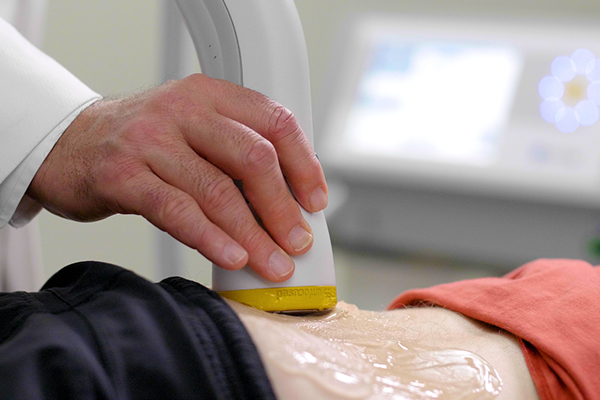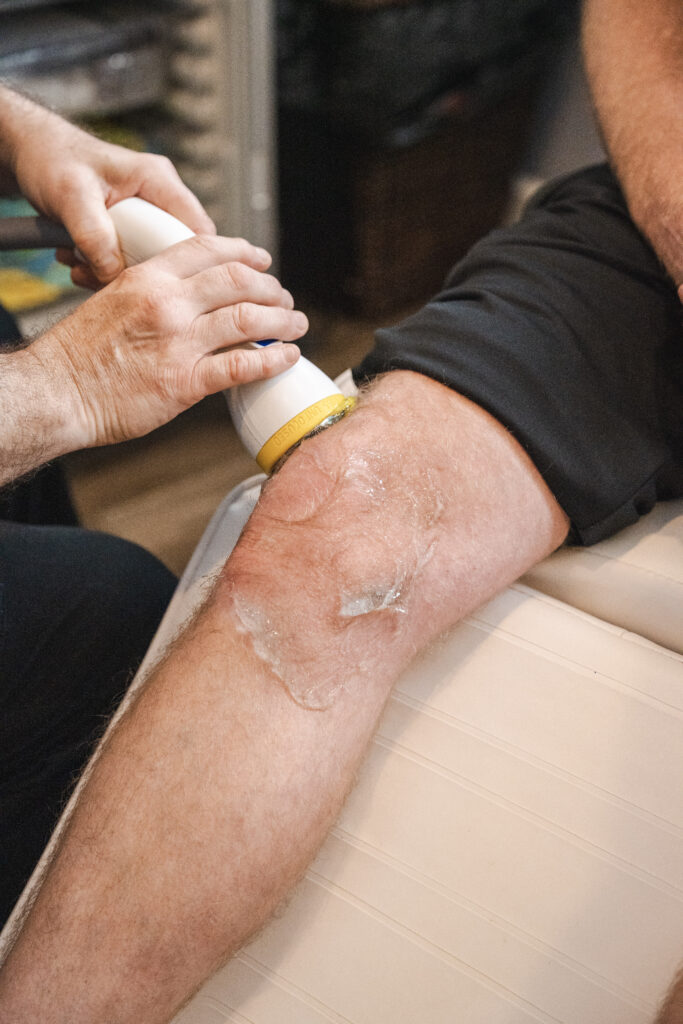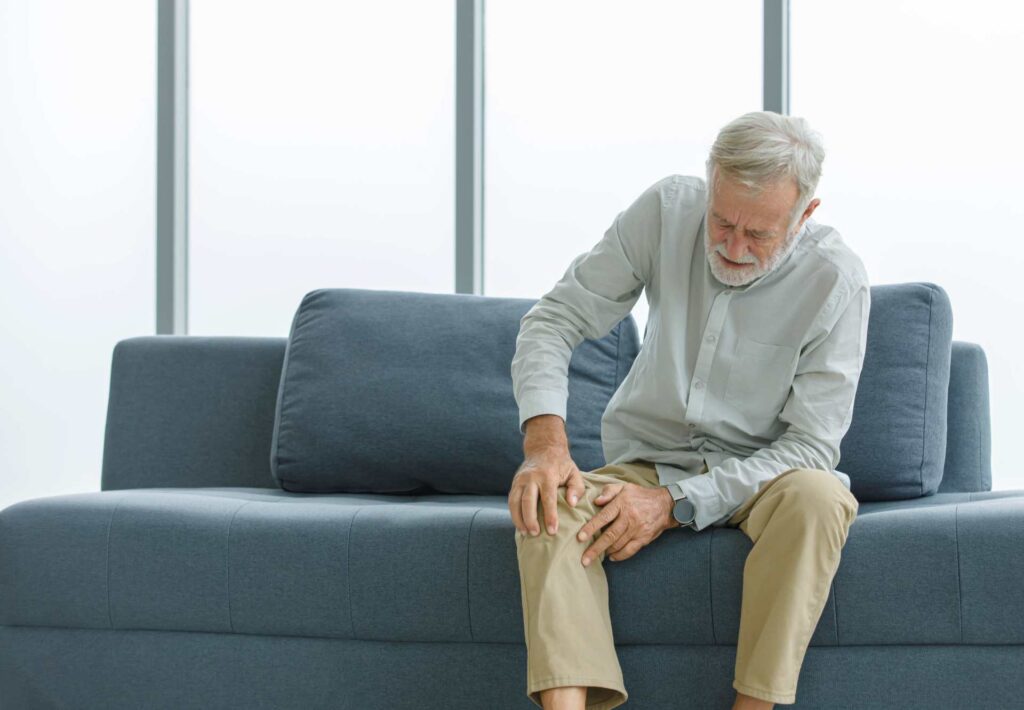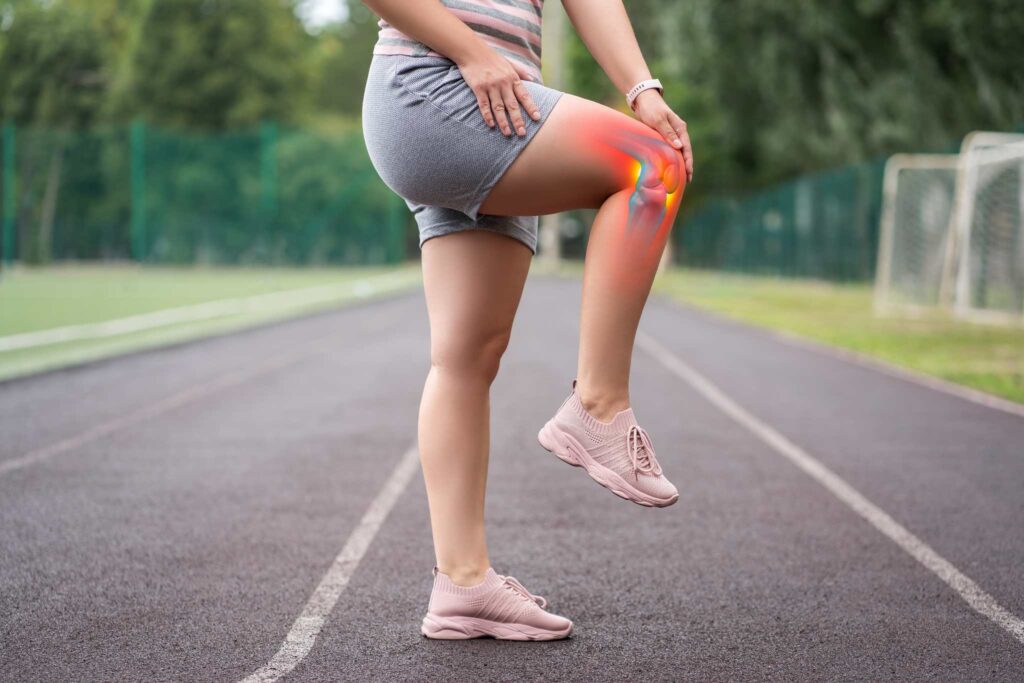Chronic pain can stem from a variety of sources, ranging from long-term illnesses to injury recovery. Here are some of the most prevalent causes of chronic pain:
- Muscle or tissue damage: Overuse, improper movements, or sudden accidents can result in muscle or tissue injury, leading to chronic pain.
- Arthritis: This degenerative joint disease can cause persistent pain and stiffness in various body parts.
- Neuropathic pain: This type of pain is caused by damage to the nervous system, including conditions like neuralgia and diabetic neuropathy.
- Fibromyalgia: A condition that results in widespread pain, fatigue, and sleep issues.
- Back issues: Problems like herniated or bulging discs, spinal stenosis, or lower back pain can result in chronic discomfort.
It’s important to note that these are just some of the most common causes of chronic pain. If you are experiencing knee pain, you can learn if your condition is suitable for treatment and try shockwave therapy with our New Patient Special.
Benefits of Shockwave Therapy for Chronic Pain
Shockwave therapy presents an encouraging non-invasive alternative for treating chronic pain, offering a range of benefits. This therapy employs high-energy shockwaves to promote healing in affected areas. Here are some of the benefits of using shockwave therapy for chronic pain:
Faster Healing
Shockwave therapy harnesses high-energy sound waves to stimulate the body’s natural healing mechanism, promoting the recovery of damaged tissues. This can be particularly beneficial for those experiencing persistent or recurring pain.
Diminished Dependence on Medication
Many conventional treatments for chronic pain involve medications that may have undesirable side effects. Shockwave therapy is a drug-free alternative that can reduce the reliance on painkillers or other treatments, making it an appealing choice for those preferring non-pharmacological interventions.
Improved Quality of Life
Chronic pain can drastically affect quality of life, impeding daily tasks or leisure activities. Shockwave therapy can help alleviate pain and enhance mobility, allowing patients to resume their usual activities and improve their life quality.
Non-Invasive and Safe
Unlike many chronic pain treatments, shockwave therapy is non-invasive and safe. It doesn’t require any incisions or anesthesia and carries a low risk of complications. This makes it a desirable choice for those seeking to avoid more invasive treatments.
Overall, shockwave therapy is a promising treatment option for those struggling with chronic pain.
How Shockwave Therapy Works
Shockwave therapy is a non-invasive treatment that uses high-energy sound waves to stimulate the body’s healing process. Here’s how it works:
Understanding Shockwaves
Shockwaves are rapid sound wave pulses, characterized by a high-pressure surge followed by a relatively low-pressure trough. These waves are common in everyday life and can be produced by various events that lead to changes in air pressure, such as supersonic aircraft, lightning, or earthquakes.
How do Shockwaves Treat Chronic Pain?
A device is used to generate and safely deliver shockwaves to the affected area. These shockwaves can encourage healing at the cellular level, improve blood circulation, and initiate the body’s natural healing process.
Types of Shockwave Therapy
Numerous types of shockwave therapy are available, with the three most common being radial shockwave therapy (RSWT), focused shockwave therapy (FSWT), and acoustic wave therapy (AWT).
RSWT uses a handheld device that delivers pressure waves to the skin’s surface, making it a popular choice for conditions like tendinitis and plantar fasciitis. However, for deeper tissue injuries, it may be less effective, and multiple treatments may be needed.
FSWT employs a device that directs high-intensity shockwaves directly to the affected area, making it commonly used for treating chronic conditions like plantar fasciitis and slow-healing bone fractures. However, the treatment intensity may need adjustment based on individual tolerance as it can be uncomfortable for some patients.
AWT uses a device that delivers low-intensity shockwaves to the affected area, commonly used to improve blood flow, reduce pain and inflammation, and promote tissue healing. It is frequently used to treat conditions like erectile dysfunction and cellulite, but the low-intensity shockwaves may not be effective for some conditions.
Unfocused Shockwave Therapy delivers high-intensity shockwaves that penetrate a wider and deeper area of tissue than focused or radial waves. SoftWave is the only widely available unfocused shockwave treatment in the US. It can treat the same conditions as traditional focused shockwave therapy, offering superior relief for significant joint and muscle issues, including chronic pain. Unfocused shockwaves may also require fewer sessions compared to radial or focused shockwave treatments.






